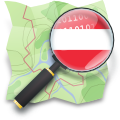About OpenStreetMap
OpenStreetMap (OSM) is much more than just a map – it’s a massive, freely accessible geodata database. The data collected in OSM can be used in countless ways to create a wide variety of specialized maps. Unlike traditional maps, which are often static and fixed, OSM data can be tailored for diverse purposes and applications.
Examples
Here are some examples of maps created using OSM data:
- OpenFireMap or Wasserkarte: Displays the locations of hydrants and firefighting facilities.
- Equestrian and Hiking Map: Detailed maps with hiking trails and elevation profiles.
- Public Transport Map: Shows routes and stops for buses and trains.
- OpenCycleMap: Perfect for cyclists, with tailored information about routes and infrastructure.
- Touch Mapper: Tactile 3D-printed maps to make surroundings accessible for visually impaired users.
- Streets.gl or F4Map: 3D maps rendered in the browser; for desktop use, try OSM2World.
- IndoorEqual or OpenLevelUp!: Indoor mapping tools for buildings, capturing rooms and floors.
OSM data is not only used for non-profit projects but also commercially – for example, by companies developing navigation solutions or map providers creating custom maps based on the free geodata.
Can I Participate?
Yes, and that’s what makes OSM so special! Everyone can contribute, whether by making small changes or regularly adding new data – every bit of help is welcome!
You can leave a note on the map anonymously if you notice something that needs updating, or you can create an account and edit the map directly. Using various apps on your smartphone or via your browser, you can add data, mark streets or buildings, and much more.
What Can Be Mapped?
In OpenStreetMap, anything that can be observed and verified on-site is included. Examples include:
- Streets, houses, forests, and rivers.
- Playgrounds, trees, public mailboxes, and monuments.
- Bus stops, ticket machines, and transit routes.
- Names of places, surface types (e.g., asphalt, gravel), and business hours for shops and facilities.
However, there are clear rules: No private data or opinions. Information like private phone numbers or subjective comments such as “this place is beautiful” doesn’t belong in the OSM database.
The Community
OpenStreetMap thrives on a large and active community. It includes not just mappers but also many volunteers who contribute in different ways – developing software, organizing meetups or mapathons, and supporting other OSM-related events.
We emphasize making everyone feel welcome: New participants are just as valued as experienced mappers. If you’ve read this far, we probably already consider you part of our community!
There are forums, chats, and mailing lists where mappers exchange ideas and newcomers find support. Whether you’re a beginner or a long-time contributor, there are always opportunities to connect with mappers worldwide.
